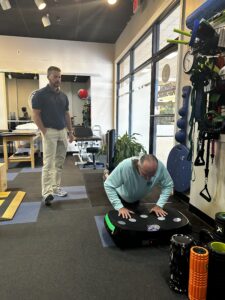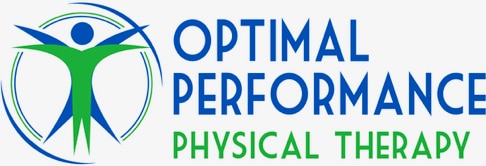How We Treat
This is a form of manual therapy that lifts the tissue creating a decompression affect in the interstitium where fluid and edema are often times present. Benefits of cupping include pain relief, decreased inflammation, increased blood flow, relaxation and a form of deep tissue massage. Cupping has become very prominent in the sports world and the histamine response can be seen on a number of athletes. Let us know if we can help with pain that you may be having. This is an effective treatment for a number of body parts including neck and back pain, shoulder and knee pain, elbow and wrist pain and ankle/foot pain.
Dry needling is a treatment that uses thin needles inserted into the target area to stimulate tissue healing and decrease pain. It is usually used in conjunction with electrical stimulation that further aids in pain modulation. The most common conditions treated using this technique are headaches, upper back pain, TMJ, shoulder pain, tennis elbow, carpal tunnel syndrome, low back pain and sciatica, hip pain, bursitis, knee arthritis, achilles tendonitis, and plantar fasciitis. While these are the most common areas for which dry needling is used, it can also be used to treat trigger point pain that can occur in various parts of the body.
- Reduce, eliminate, and/or control pain (both acute and chronic)
- Increase local circulation
- Decrease swelling
- Improve range of motion
- Reduce muscle spasm
- Provide biofeedback (aka improve body awareness)
- Improve motor coordination
- Provide neuromuscular re-education
- Prevent or reverse muscle atrophy
When used for pain, this modality can trigger an innate and completely natural analgesic effect by stimulating specific sensory nerve fibers, which both decrease the sensation of pain and release neurotransmitters that prolong the pain-relieving effects.
When used for muscle re-education, it sends electrical impulses directly to the nerves that control the muscle, triggering a contraction and essentially retraining the muscle to function normally again.
Biofeedback has been used for more than fifty years in rehabilitation to facilitate normal movement patterns after injury. At Optimal Performance we utilize biofeedback to re-educate muscle that has become inhibited due to surgery or injury. We do this through an app on your phone that is connected to our biofeedback unit that gives the patient visual feedback in order to enhance performance.
This modality is a non-invasive technique that uses specifically designed stainless steel instruments to identity and treat areas exhibiting soft tissue fibrosis or chronic inflammation. GT allows a clinician to get as deep into the tissue as necessary to invoke change, yet be sensitive to patient and tolerance. In time, this process will reduce or eliminate the adhered fibers, restoring motion and eliminating the pain associated with it. It will rebuild your soft tissue injury into healthy functioning tissue.
Hivamat is a deep oscillation therapy device, which involves electrostatic attraction which is transferred to the tissue and pulses the electrostatic field, causing an intense, but gentle, resonant vibration of the tissue when one of the electrodes is moving. Due to the compressive force of the electrostatic field, the tissue segment is attracted (lifted) and dropped rapidly up to 250 times per second. Deep tissue deformation is achieved by successive, rapid, and rhythmical application. This effect leads to the recovery of flexibility and mobilization between individual fibers and layers. Hivamat can decrease pain and inflammation and reduce swelling.
Manual therapy and manipulation are a valuable tool that we use to help pain, improve mobility, and fix acute onsets of pain that can happen when we swing a golf club, sleep wrongly, or turn/twist our bodies in a way that creates sharp, acute pain. These techniques include stretching a joint in a way that puts it back in its correct, anatomical position. Widely used for treatment of neck, mid back, and low back pain, these techniques are used to treat multiple joint issues that can occur in the hip, arm, leg, ankle and foot. This treatment method also involves using instruments that aid in treating muscles, ligaments, and soft tissue disorders by helping injured areas heal.
Kinesio taping involves using a specialized type of tape to help reduce pain and improve mobility while supporting your joints, muscles, and tendons. This type of tape is primarily used to facilitate your motion and inhibit your pain. In addition, Kinesio taping is thought to have the ability to reduce inflammation, promote post-surgical healing, optimize performance, prevent injury and promote good circulation and assist the body’s natural healing process.
Motion Guidance is a visual feedback system that uses a laser device to direct the patient’s movements as they perform rehabilitation exercises. This can be used to treat athletes returning to sport, headaches and dizziness and balance disorders.
Mechanical traction is a therapeutic technique that relieves pressure on the spine. Cervical traction and lumbar traction are similar in that they both use stretching to help alleviate pain, but they are different in their application of stretching: Cervical traction is a gentle, controlled stretch used to relieve muscle tension and pain in the neck. In lumbar traction, a gentle force is used to gently separate the pelvis from the lower back.
Soft tissue damage can affect your skin, muscles, tendons, ligaments, and any other tissue surrounding your organs and bones. STM therapy treats these types of injuries through manual treatment techniques.
Physical Therapists use their hands or instruments to facilitate improved mobility of the soft tissue, allowing for improved movement patterns and a healthier joint.
Vibration therapy is a relatively new tool in the world of PT. This gives somatosensory input to the body part, sending input to the brain, which sends a different output to said body part. This changes the perception of how our brain interprets pain and improves function. It improves flexibility, enhances blood flow, reduces muscle soreness after exercise, and improves bone density.

